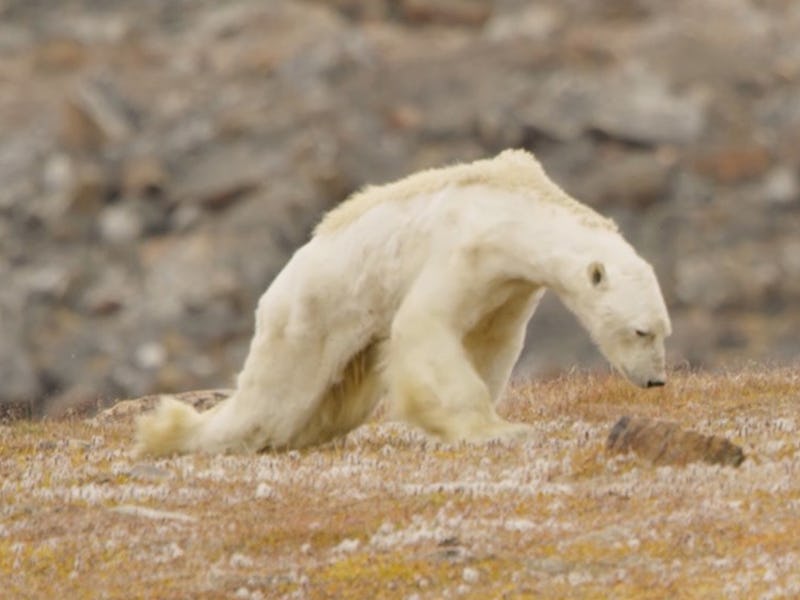Video of a Dying Polar Bear Previews Extinction, Says Biologist
Scientists predict polar bears will be extinct in 100 years.

The new viral face of climate change is an emaciated polar bear.
The video went viral this week when posted on Instagram by National Geographic photographer Paul Nicklen, a biologist by training and the founder of non-profit Sea Legacy.
Nicklen shot the footage on a Canadian island inside the Arctic Circle wherein the bear appears in the video lying down, digging through a metal trash bin for scraps, and, later finally sinking into the ground, exhausted.
“It’s a slow, painful death,” Nicklen writes in a description of the video. “When scientists say polar bears will be extinct in the next 100 years, I think of the global population of 25,000 bears dying in this manner.
In his emotional caption on Instagram, Nicklen wrote that his entire team was “pushing through tears” while documenting this bear, who “certainly died within hours of this moment.”
The World Conservation Union estimates that there are between 20,000-25,000 polar bears in the wild, mostly on sea ice in the Arctic Circle, where they live, breed, and hunt for seals, their primary prey. But sea ice is declining rapidly – at a rate of 4.6% per decade, according to the World Wildlife Fund – pushing polar bears onto land, where their natural prey is scarce, for five to six months at a time.
This puts them at increased risk of starvation. Indeed, in his Instagram caption, Nicklen wrote, “This is what starvation looks like. The muscles atrophy. No energy. It’s a slow, painful death.”
The video has been watched more than 3.5 million times on Nicklen’s personal Instagram, as well as on National Geographic’s, and has been picked up by media around the world.
This is not the first time that an image of a polar bear has gone viral, though. In his documentary An Inconvenient Truth, former Vice President Al Gore uses an animated video of a swimming polar bear unable to find sea ice as a way to drive home the impending realities of global warming, while in 2015, wildlife photographer Kerstin Langenberger captured another viral image of a gaunt bear.
The threats to polar bears have not gone away since Gore’s video or Langengberger’s photo, leading to the question: can viral save an endangered species?
Nicklen made an impassioned appeal on Instagram: “We must reduce our carbon footprint, eat the right food, stop cutting down our forests, and begin putting the Earth—our home—first.”